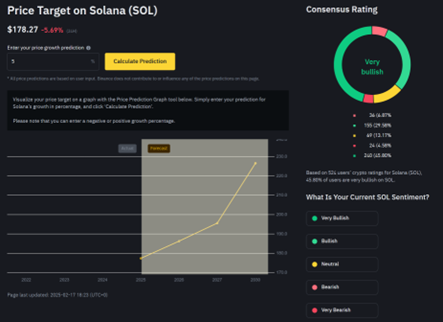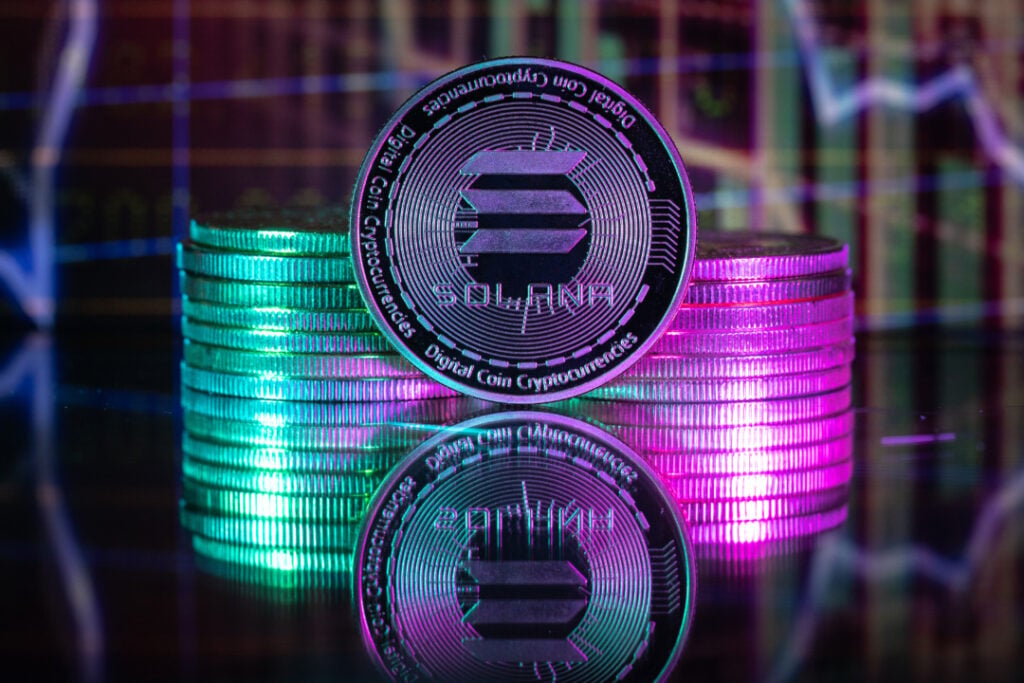Photo Credit: Dennis – stock.adobe.com
Blockchain gaming has become a major area within the over component of the Web3 ecosystem. Last year, more than a quarter of overall blockchain activity was related to gaming.
Blockchain gaming has primarily flourished on one of several major blockchain platforms, but one in particular, Solana, is likely to play an increasingly larger role in the space going forward. This may explain why, out of 535 users surveyed on Binance, 46.36% of them reported being very bullish on SOL.

Solana’s strong prospects with regards to Web3 gaming have to do with this blockchain’s technological and cost advantages over other blockchains. These advantages make it the ideal platform for the “next big thing” in Web3 gaming: play-to-earn, or P2E, games.
Blockchain Gaming at a Glance
Blockchain gaming is the end product of the integration of blockchain technology into video gaming. Blockchain games are able to offer certain features not available in traditional games. A key feature of blockchain games are their in-game asset ownership capabilities.
Blockchain game developers have been able to feature unique digital assets within games, in the form of non-fungible tokens (or NFTs). These in-game NFTs include features like characters, skins, even virtual real estate properties. Besides being salable outside of the game, some in-game assets can also be transferred to other games, further bolstering their appeal to players.
Another advantage Blockchain games have is in their use of decentralized governance. By letting players have a seat at the decision-making table, these games can drive even greater levels of long-term engagement compared to traditional video games.
Blockchain gaming has been growing rapidly in recent years. What could provide an acceleration to this growth is P2E gaming. As the name suggests, these are games where players have the opportunity to earn in-game assets, based on play hours and the hitting of milestones.
Where Solana Comes Into the Picture
While still very far from eclipsing Ethereum as a leading platform for Web3 gaming, Solana may just well be a superior gaming blockchain, for both developers and for players.
Compared to more popular gaming blockchains, Solana has three technological advantages. First, Solana features a high throughput. While other platforms may only be able to process dozens or hundreds of transactions per second, Solana’s throughput can reach levels as high as 65,000 transactions per second.
Second, Solana has far lower transaction costs. This is beneficial for both players and developers. Players are able to encounter fewer fees from Blockchain game transactions. Developers are able to launch or test new games on the Solana blockchain, with less of a financial risk than with other blockchains.
Third, besides being known for high transaction speed and low transaction costs, Solana is also very scalable. Developers are able to grow the player base of their games, without having to worry about the impact of increased usage on game performance. This same scalability also benefits traders looking to convert SOL to USD, ensuring fast and cost-effective transactions.
The Perfect Fit for P2E Gaming
These aforementioned advantages, which make Solana in many ways superior to other gaming blockchains in general, are especially advantageous when it comes to P2E gaming. With P2E gaming, the objective is to incentivize players to maximize their game play.
This can help both increase the short-term accumulation of a player base, as well as foster long-term engagement, resulting in lower player churn. While other blockchains could in theory serve as hosts for P2E games, it’s easy to see why Solana would be a better solution for Web3 games in this category.
The complexities and level of transactions necessary to operate such games are better executed on a platform scoring highly in throughput and scalability, like Solana.
Lower transaction fees may also be key to attracting players/increasing overall transaction volume. Solana has the competition beat in this area as well.
Solana Could Spark a P2E Revolution, and Vice Versa
Besides perhaps becoming an increasingly larger blockchain within the Web3 gaming vertical, Solana could also help accelerate the growth of P2E gaming, as its technological features enable more of such games to come online.
Alongside the prospect of Solana sparking a P2E revolution, it’s possible that the rise of P2E games could spark something revolutionary for Solana’s native cryptocurrency. If play-to-earn games continue to proliferate, especially on the Solana blockchain, this will in turn drive increased demand and usage of SOL, which could place upward pressure on SOL prices.
Caroline is doing her graduation in IT from the University of South California but keens to work as a freelance blogger. She loves to write on the latest information about IoT, technology, and business. She has innovative ideas and shares her experience with her readers.






